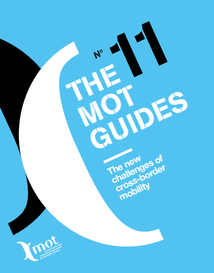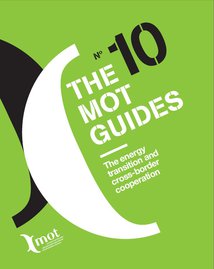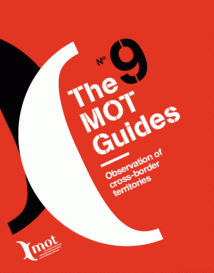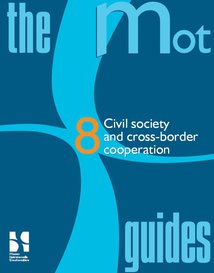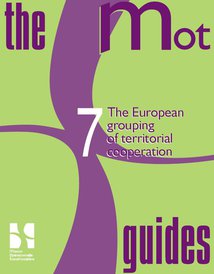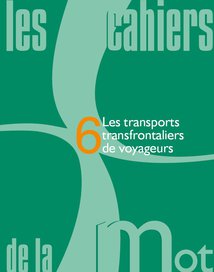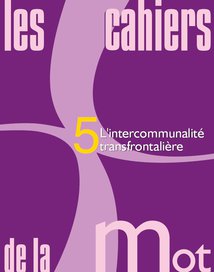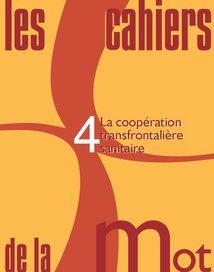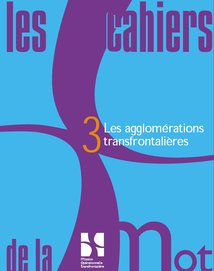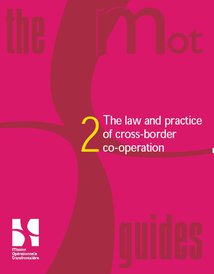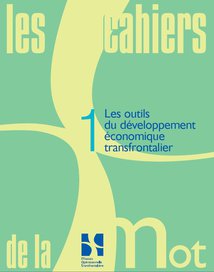The MOT Guides
MOT GUIDES Nr.11 - DECEMBER 2022
The new challenges of cross-border mobility
Be it for freight or for passengers, for occasional or daily travel, mobility is at the heart of cross-border life. This 11th MOT thematic Guide gives an overview of the experiences and policies conducted in the field of cross-border mobility in various European territories. It highlights a wide variety of projects, but also obstacles, issues and major challenges for the years to come.
MOT GUIDES Nr.10 - JANUARY 2019
The energy transition and cross-border cooperation
Neither the climate nor energy recognise national borders. Cross-border territories, as players in the energy transition, can take full advantage of the opportunities for development that it offers. The tenth edition of the MOT Guides highlights the stakes of energy transition in cross-border territories. What are the good practices? What kind of obstacles are there and how to overcome them? How do the different levels of energy policy fit together in France? What are the European Commission’s political and financial instruments in the area of the energy transition?
MOT GUIDES Nr.9 - MARCH 2014
Observation of cross-border territories
European policies are still in many ways out of phase with the cross-border experience and contribute to a feeling of distance or even lack of understanding between the European Union and its citizens. It is urgent to change approach by encouraging the development of shared cross-border observation in order to obtain better knowledge and understanding of today’s territorial realities.
MOT GUIDES Nr.8 - JANUARY 2011
Civil society and cross-border cooperation
The question of the role of civil society in cross-border cooperation is crucial. It is a return to the sources, an increasing awareness of the very purpose of cross-border cooperation and, in a broader sense, of the construction of Europe.
The topic covers civil society both as a player in cross-border cooperation and as a recipient of public-sector projects or a consumer of cultural and information provision.
MOT GUIDES Nr.7 - MAY 2008
The European Grouping of Territorial Cooperation (EGTC)
The EGTC is the instrument of European territorial cooperation. The EGTC has been introduced notably to manage European territorial cooperation projects and programmes. The use of the EGTC aims to promote cross-border, but also transnational and interregional, cooperation actions on the internal and external borders of the territory of the European Union, in order to reinforce economic and social cohesion. It provides a novel framework for cooperation actions which could not be based on the legal framework of cross-border cooperation.
MOT GUIDES Nr.6 - DECEMBER 2006 [French only]
Les transports transfrontaliers de voyageurs
Les transports collectifs transfrontaliers de voyageurs représentent un facteur important du processus d'intégration européenne. Ils sont susceptibles d'encourager la mobilité des travailleurs frontaliers en limitant la saturation des infrastructures routières aux frontières. Ils sont également constitutifs, par la multiplication des échanges qu'ils entraînent, de la création de projets de territoires transfrontaliers, propres à favoriser, dans les agglomérations notamment, une bonne articulation des territoires nationaux.
MOT GUIDES Nr.5 - MAY 2005
[French only]
L'intercommunalité transfrontalière
Les textes relatifs à la coopération transfrontalière définissent des modalités de coopération simples : les collectivités territoriales coopèrent dans leurs domaines communs de compétence, dans le respect de leur droit interne et des engagements internationaux. Dans la pratique, coopérer au travers des frontières, c’est, pour les collectivités, confronter des différences d’échelle territoriale, de mode d’intervention, de contrôle, de culture administrative et de répartition des compétences, résultant des évolutions historiques propres à chaque Etat.
MOT GUIDES Nr.4 - DECEMBER 2004 [French only]
La coopération transfrontalière sanitaire
Comme dans de nombreux domaines de la coopération transfrontalière, la coopération sanitaire est née des besoins des populations frontalières. L’importance des frontières et des régions frontalières est souvent perdue de vue lorsque l’Europe se fait l’écho de la mobilité des patients ou des professionnels de santé. La spécificité transfrontalière apparaît peu [...]. Or, la coopération transfrontalière est avant tout issue de projets concrets animés par des professionnels de santé motivés...
MOT GUIDES Nr.3 - SEPTEMBER 2003 [French only]
Les agglomérations transfrontalières
Si les agglomérations transfrontalières entre la France et ses pays voisins se caractérisent par leur extrême diversité, fondée sur leur forte spécificité géographique, le développement de leur projet de territoire transfrontalier résulte toujours d’une volonté politique qui s’exerce sur la base d’une dynamique de projets.
MOT GUIDES Nr.2 - JUNE 2002
The law and practice of cross-border cooperation
How is a cross-border project - bringing together territorial authorities, their groupings and any other public or private entity from different countries - achieved?
The MOT has been working since January 2000 toward the formation of a legal "toolbox" based on the field experience that it has described and analysed.
MOT GUIDES Nr.1 - NOVEMBER 2001 [French only]
Les outils du développement économique transfrontalier
Les projets impliquant les autorités publiques rencontrent souvent des difficultés propres à la coopération transfrontalière, bien éloignées des stratégies commerciales. L’enjeu principal se situe à un double niveau : la façon dont les autorités en charge d’espaces transfrontaliers mettent en œuvre leurs projets à travers le choix d’outils de développement économique, et les spécificités de ces outils au regard du contexte transfrontalier sur lequel ils agissent.
